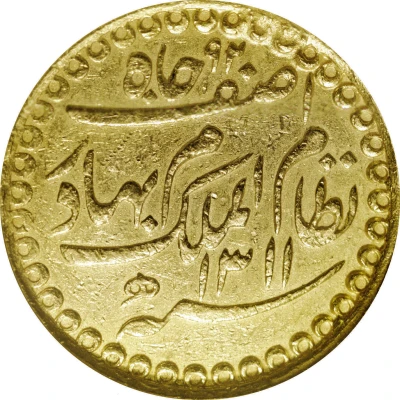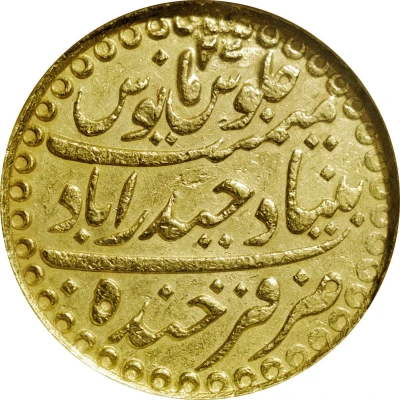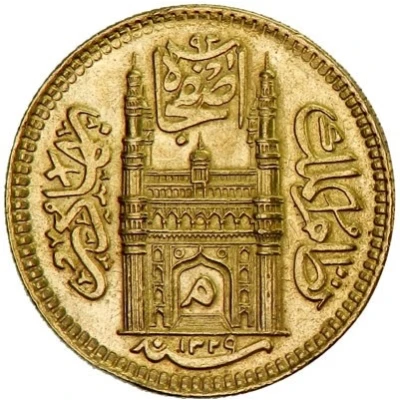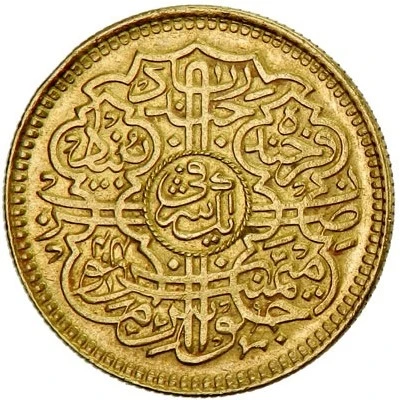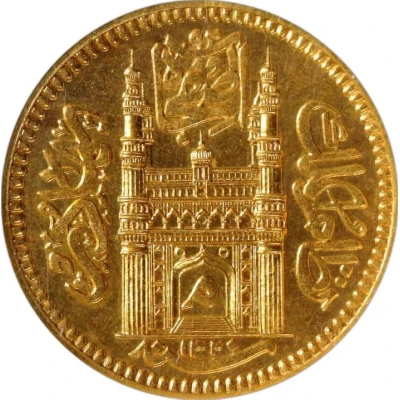
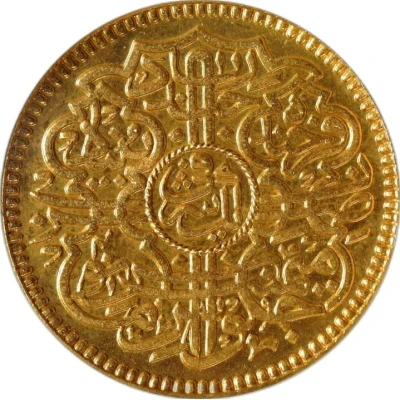

© Stacks Bowers
Ashrafi - Mir Mahbub Ali Khan Hyderabad Gilt Pattern
1320 (1902) year| Gilding metal clad silver | 11.178 g | 25 mm |
| Issuer | Princely state of Hyderabad |
|---|---|
| Ruling authority | Mahbub Ali Khan (1869-1911) |
| Type | Pattern |
| Year | 1320 (1902) |
| Calendar | Islamic (Hijri) |
| Value | 1 Ashrafi (16) |
| Currency | Rupee (1762-1950) |
| Composition | Gilding metal clad silver |
| Weight | 11.178 g |
| Diameter | 25 mm |
| Shape | Round |
| Orientation | Medal alignment ↑↑ |
| Demonetized | Yes |
| Updated | 2024-10-05 |
| Numista | N#419036 |
|---|---|
| Rarity index | 100% |
Reverse
Value inside of circle surrounded by year of reign.
Script: Urdu
Translation:
One Ashrafi
Struck at Farkhanda bunyad, Hyderabad, in the (RY) 35th year of tranquil prosperity
Edge
Reeded
Comment
Gilt Pattern on Silver Base. Dimensions are taken from Regular issue Ashrafi which was minted after this pattern.
Pattern coin of modernized design that was released for circulation during the reign of Nizam Mahbub Ali Khan. 1 Ashrafi = 16 Hyderabadi Rupees.
Interesting fact
One interesting fact about the Pattern Ashrafi - Mir Mahbub Ali Khan (Hyderabad Gilt Pattern) 1320 (1902) coin is that it was minted during a time of great change and political upheaval in the Princely state of Hyderabad. The coin was issued during the reign of Mir Mahbub Ali Khan, who was the Nizam of Hyderabad from 1869 to 1902. During his reign, the state faced numerous challenges, including the loss of its territories to the British and the introduction of new currency and monetary systems. Despite these challenges, the Pattern Ashrafi coin remains a unique and valuable piece of numismatic history.
